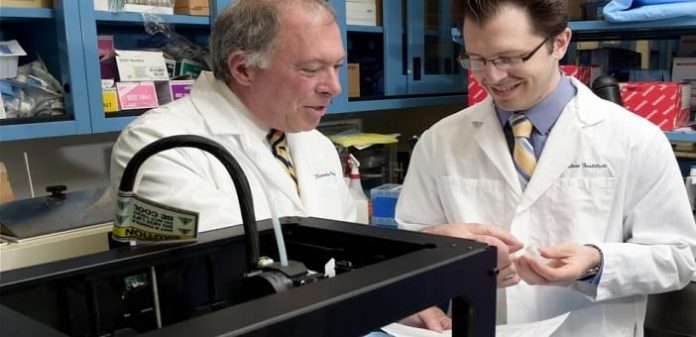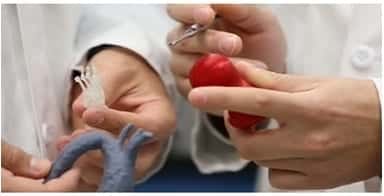Scientist’s 3D print cartilage to repair damaged windpipes.
Investigators at The Feinstein Institute for Medical Research have made a medical breakthrough by using 3D print body parts on a MakerBot Replicator 2X Experimental 3D Printer to create cartilage designed for tracheal repair or replacement.
Mr. Goldstein, a PhD candidate at the Hofstra North Shore-LIJ School of Medicine, has been working with a team of surgeons at the North Shore-LIJ Health System for the past year on determining if 3D printing and tissue engineering could be used for tracheal repair and replacement. Tracheal damage can be caused by tumor, endotracheal intubation, blunt trauma, and other injuries. Narrowing and weakness of the trachea can occur and are often difficult to repair.
The researchers combined two emerging fields: 3D printing and tissue engineering. Tissue engineering is similar to other kinds of engineering, except instead of using steel or computer code to make things, living cells from skin, muscle or cartilage are the raw material. They also know how to make cartilage from a mixture of cells called chondrocytes, nutrients to feed them, and collagen, which holds it all together. Shaping that cartilage into a nose or a windpipe is another matter. That’s where 3D printing comes in. A 3D printer can construct scaffolding, which can be covered in a mixture of chondrocytes and collagen, which then grows into cartilage.
Todd Goldstein said that “Making a windpipe or trachea is uncharted territory,”
Goldstein further added the report by saying that “It has to be rigid enough to withstand coughs, sneezes and other shifts in pressure, yet flexible enough to allow the neck to move freely,”
Goldstein in another report also said “With 3D printing, we were able to construct 3D-printed scaffolding that the surgeons could immediately examine and then we could work together in real time to modify the designs,” Goldstein added.
Researchers used the affordable and accessible MakerBot Replicator 2X Experimental 3D Printer that costs USD 2,499 and is a size that fits on a desktop.
The results of the study, presented at the Annual Meeting of The Society of Thoracic Surgeons in San Diego, illustrate how the 3D printed windpipe or trachea segments held up for four weeks in an incubator.
“The cells survived the 3D printing process, were able to continue dividing, and produced the extracellular matrix expected of tracheal chondrocytes,” said Goldstein.
In other words, they were growing just like windpipe cartilage.


